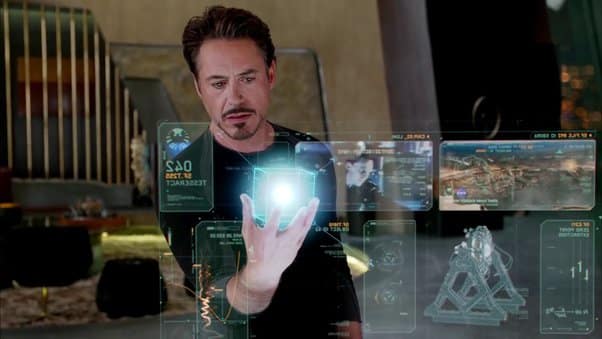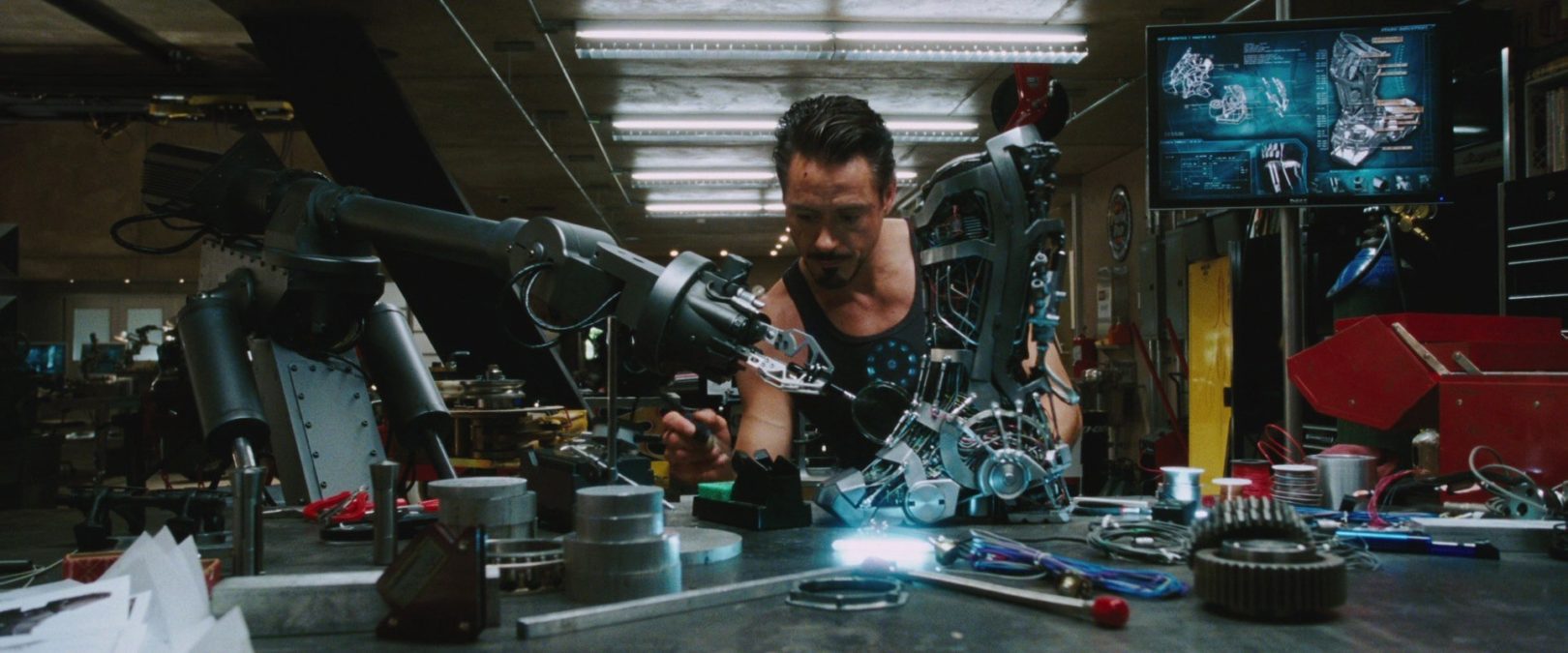This article contains affiliate links. This means that if you make a purchase through one of these links we may get a small commission from the sale at no additional cost to you. Thank you for your support.
Learn Ultrahard Things Ultrafast
2008’s Ironman blew me away in its depiction of the swaggering, quippy, and casually genius protagonist Tony Stark, played to perfection by Robert Downey Jr. After the lackluster comic book movies of the 90s and early oughts, I didn’t really expect much, but Tony Stark turned out to be a man of science who made everything about physics and engineering seem like the coolest thing you could possibly do. The film inspired in me, as it did for many, an intense curiosity about tech and a desire to understand the world at large. In short, to learn as much as possible.
We’re not all super geniuses like Tony Stark, however. The kind of learning that Tony achieves on a regular basis is… not ordinary.
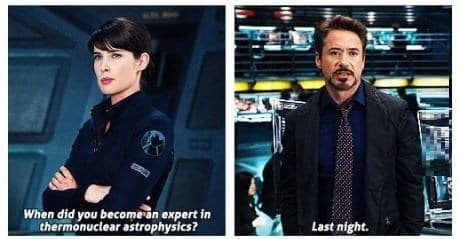
However, there is a similarly ambitious concept that is accessible for us mere mortals- it’s called ultralearning. Popularized by Scott Young’s book of the same name, ultralearning is a way to go beyond what you’re used to getting in the classroom. It’s a way to remove certain obstacles that muddy up the education process, and get right to the heart of what actually instills knowledge.
Learn Like Tony Stark
Tony combines a dizzying array of STEM disciplines (robotics, computer engineering, material science, etc.) to fashion the Ironman suit. These are hard subjects. Mastering any one of these could become a person’s entire career. Yet, when building the Mark I armor, Tony seems to pull together these differing facets pretty quickly, in a matter of weeks (days?) perhaps.
Ultrahard things. Ultrafast.
For those who endeavor to learn difficult things quickly, who want to take things beyond mere inspiration, this article should serve to jumpstart your journey (or augment an already existing one). This will apply whether you want to tackle STEM fields like Tony Stark or more humanities or arts related subjects. This post takes ideas from Scott Young’s book, Ultralearning, as well as observations from Tony Stark’s portrayal in the Ironman movies and larger MCU, and attempts to synthesize them into lessons we can use to better incorporate ultralearning methods into our own lives.
It is not meant to be an exhaustive treatment of ultralearning (see Scott Young’s book for that), as Tony Stark does not perfectly illustrate all related principles. On the other hand, Tony does display some traits that are unique to his character that are worth exploring. For the purposes of this article he serves as a kind of hyper-idealized learner model.
To gain some insights and tools on how you can learn all things better and faster read the article below. Then grab a copy of Scott’s book, Ultralearning, so you can continue your ultralearning journey.
Right now, bookshop.org, who’s mission is to support indie bookstores, has a bunch of deals going on for the holidays. Check them out if you’re in the market for some great holiday gifts.
What is Ultralearning?
Scott Young is an impressive individual. He’s been writing about learning methods, how to study effectively, and about general productivity on his blog for almost 20 years now. He’s also completed some WILD learning challenges of his own design, including learning the MIT computer science undergrad curriculum in a year. The sum total of his experimentation and thinking on the subject of learning culminated in his 2019 book, Ultralearning: Accelerate Your Career, Master Hard Skills and Outsmart the Competition. In the book, he defines ultralearning as this-
“ULTRALEARNING: A strategy for acquiring skills and knowledge that is both self-directed and intense.”
Scott Young, Ultralearning
The book breaks down several learning principles, many of them non-traditional, that increase learning efficiency, cutting out the fluff entirely. In short, ultralearning doesn’t play around. It gets right to the heart of things, addressing the intended subject directly, often in the most difficult manner possible.
Another important thing that Young addresses in the book is the self-directed nature of ultralearning. Although many times an individual can learn at an accelerated rate due to the fact that they don’t have to follow a pre-ordained schedule, Young states that self-directed does not necessarily mean one need learn in complete solitude. There are times where it’ll be beneficial to consult others or drill or practice with others. And Young points out that if in your self-directedness you determine that taking a more traditional class is the best method to reach your goals then that’s totally acceptable.
When it comes to learning, often what is difficult in the short term is best in the long run. This is one of the reasons it’s a perfect fit for Tony Stark. Afterall, Tony exudes confidence and therefore isn’t put off by difficult things. He’s energized by them.

Tony Stark’s Rules for Ultralearning
Engineer a Plan (with AI)
Ultralearning is all about finding the fastest way to master a subject. Rather than jumping in without any direction, it’s best to first determine the most optimal way to go about your ultralearning endeavor. Tony has sort of a Ben Franklin style approach to his learning, which is very in keeping with his background as an engineer. Franklin wasn’t so prone to exploring things just for the sake of it. Instead, he tended to pursue things for practical purposes. In other words, he intended to solve a problem.
When Tony Stark plans to solve a problem, one of the first things he does is talk to J.A.R.V.I.S., his AI assistant, about gathering data, next steps, etc. There’s a great example of this is Ironman 3 (at 1:10 in video below). After Happy gets blown up in an incident at the Chinese Theatre in Hollywood, Tony goes full on detective mode in trying to solve what happened and why. J.A.R.V.I.S sets about creating a “Mandarin database” for Tony, complete with intelligence pulled from all the major 3-letter agencies.
Tony starts by sifting through the data, including names and dates, as well as the meaning of and speaking manner of the Mandarin. When he decides there’s not much of value there besides the use of “pageantry”, J.A.R.V.I.S immediately starts offering Tony the scientific data, spouting off stats about the blast radius and heat signature. In other words, J.A.R.V.I.S can adjust and course correct based on Tony’s needs and follow up queries.
Using ChatGPT
We don’t have J.A.R.V.I.S, but we do have ChatGPT (the classic version is free to use) and other generative AI programs. These programs can help us formulate a gameplan. I entered a prompt into ChatGPT to design a program to ultralearn Spanish to a conversational level within 3 months, studying for 25 hours a week. It spit out a program within seconds. Now, on this initial try, not everything is perfect. Things can and should be tweaked and customized to the user. For instance, for days 11-15 the program told me to build a vocabulary of essential words, but it didn’t say which specific words, how many, etc. This is easily solved with some follow up prompts.
Learning to use ChatGPT can become its own learning activity. The quality of results you get from the program will depend on the quality of prompts you issue to it. Make sure to use clear, detailed language when issuing instructions. ChatGPT is able to incorporate different requirements, so it might be beneficial to dictate a timeline, what your end goal(s) is, and how much time you have to dedicate to your project. If it doesn’t give you the information you’re looking for, try asking in a different way, or give it follow up guidance to get it to conform to what you want.
The reason this is such a game changer is the speed. You can literally go from no program to a fairly detailed one in seconds. Even if you only use it as a guide or a jumping off point, it’s far faster to do things this way than to start from scratch trying to pull together resources from all over the internet. And if you do want ChatGPT to recommend other good resources it can easily accomplish this as well.
Focus | Intensity is the Key
Sometimes Tony seems like he’s all over the place, especially emotionally, as compared to some of his Avengers teammates, like the steadfast Steve Rogers. But not when it comes to his work. When it comes down to the next big thing he’s working on, Tony Stark epitomizes focus. This is one of the most important distinguishing characteristics of ultralearning. In the first Ironman movie, Pepper takes Tony to task for risking his life, etc. Tony responds by essentially saying he’s finally figured out what it is he’s supposed to do.
“There’s the next mission. And nothing else.”
Tony Stark, Ironman
If you’re going to tackle an ultralearning project, it’s going to require a large commitment in both time and energy. During another of Scott Young’s ultralearning challenges, “The Year Without English”, he states that he continued to blog and answer email (in English). But other than that, it was solely foreign language immersion, 24/7.
Suppose you decide to learn some math, say Calculus I. You decide that all you have time for is to study the subject for an hour a day in the hope that you’ll be able to understand it in 6 months or a year’s time. This is totally acceptable and for many of us, that’s all we can take on. But the truth is that’s not ultralearning. That’s just regular ol learning.
You can’t ultralearn in the midst of a bunch of other interests. Each additional responsibility you take on further dilutes the intensity of your ultralearning. And the intensity aspect is one of the major contributing factors to success in ultralearning. Not many people can put their life on hold just to engage in a learning pursuit. Even Tony Stark eventually settled down and had a family. It can be tricky, but if you’re going to dedicate yourself to an ultralearning project, you’ll need to figure out how much time and attention is needed to achieve your specific goal and timeline. And more importantly, you’ll have to determine if you can make room in your life for it.
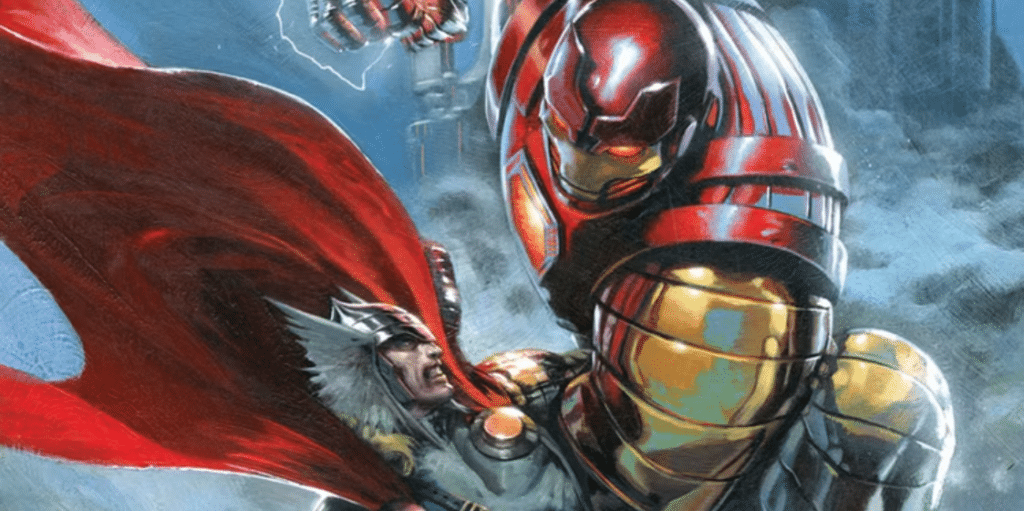
Respect the Cycle
Whether you’re going to earn a degree, master an instrument, work in a lab, or construct a nigh indestructible armor capable of going toe to toe with Thanos, your process will most likely follow the following format- Do-Test-Improve. Repeat cycle as long as it takes. Although I can’t find it now, I remember reading an interview with the jazz saxophonist, Mark Turner. He was talking about his time in school and the particular benefit of the following scenario.
He’d practice on his own, then he’d go to a jam session, try out what he’d been working on and get introduced to other ideas at the same time. He’d return to the practice room and work on his own again. Then head back to the jam session the next night. This cycle continued daily for years and it’s a crucial step in any jazz musician’s development. The cycle consists of constantly being challenged and creatively stimulated, and then having to rise to that challenge on a daily basis.
The more consistently you can conduct this cycle, the more focused you’ll stay on your learning goal and the more intense your ultralearning will be. To up your chances of success, think of compressing these cycles into a much shorter time frame. If the norm is to conduct a cycle once a week for a month, consider if you’re able to complete 2 or 3 cycles per week. Let’s look at the individual parts of the cycle.
Live in “Hardware Mode” | Learn By Doing
Tony is a hands on kind of guy. The first time we see him working in the original Ironman movie, he’s wrenchin’ on an old classic hot rod. When he is sitting at a computer or thinking out loud to J.A.R.V.I.S, it’s as a precursor to some other kind of hands on project. This is the primary method that Tony Stark uses to learn anything. He learns by doing.
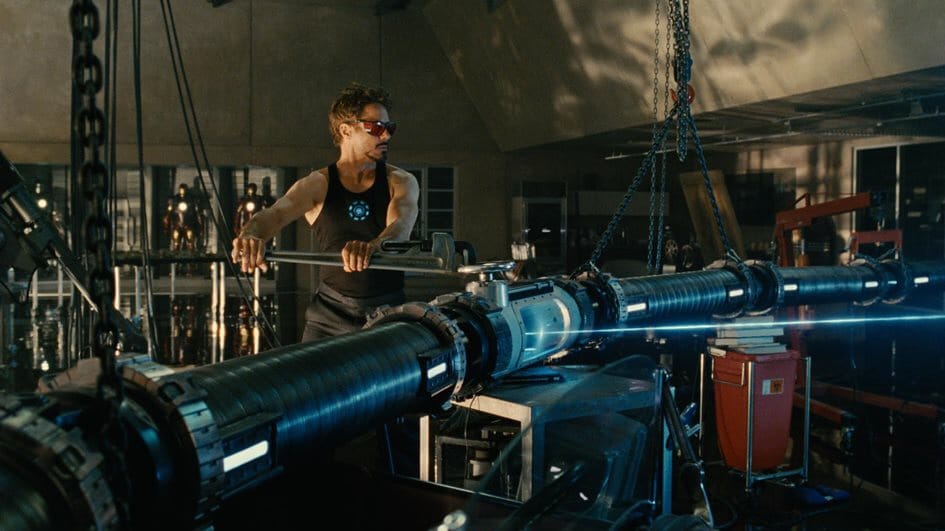
A common critique of some academics is that they can be “all theory, no practice.” Tony’s the antithesis of that. Once he’s got an idea in his head he works towards bringing it to life (sometimes literally!) until it’s done. Think back to the example given earlier, ultralearning Spanish. While you can certainly spend 5 hours a day studying vocabulary alone, ultralearning says that your time is better spent doing, in this case speaking, the target language. A better way to go about it would be to flip the proportions of your learning and spend more time practicing the language in conversation and less time reviewing mechanics of the language in isolation. Tony Stark speaks several languages in the Marvel comics.
In fact, as if this article wasn’t proof enough, Tony’s been a huge inspiration to me for a long time. Although he’s a fictional character, he still serves as a great mental model for certain things, namely using one’s intellect to solve problems and maximize one’s potential. If you like Tony or are drawn to other inspirational characters from comics and pop culture, check out the site, Things From Another World. They have a ton of great products to get you fired up, from graphic novels to statues and everything in between.
The sort of project based learning that Tony Stark engages in is so useful because it requires you to recall subskills and subsets of knowledge and put them together in meaningful ways. It’s hard and can be agonizingly slow. But once you’ve worked through a problem, the pieces of information you conjured up are more likely to stick long-term. Solving problems is a necessary and beneficial part of learning.

Run Before You Walk | Feedback and Success Through Failure
“Don’t dodge the punches.” This is the subtitle of the feedback chapter in Ultralearning, and it certainly fits Tony Stark. In fact, one of Tony’s defining traits is that he makes it a point to find the flaws in his designs. Again, he’s an engineer. He doesn’t really take time to test his retention, as in literally studying a thing and then quizzing himself to reinforce information. He’s more likely to skip that and go straight to real world testing, so that he can get the most valuable feedback data possible.
You probably already know that seeking feedback is important. This might look like any of the following-
Participating in a powerlifting competition
Rehearsing a presentation in front of some coworkers
Publishing a paper (or simply submitting a paper for publication)
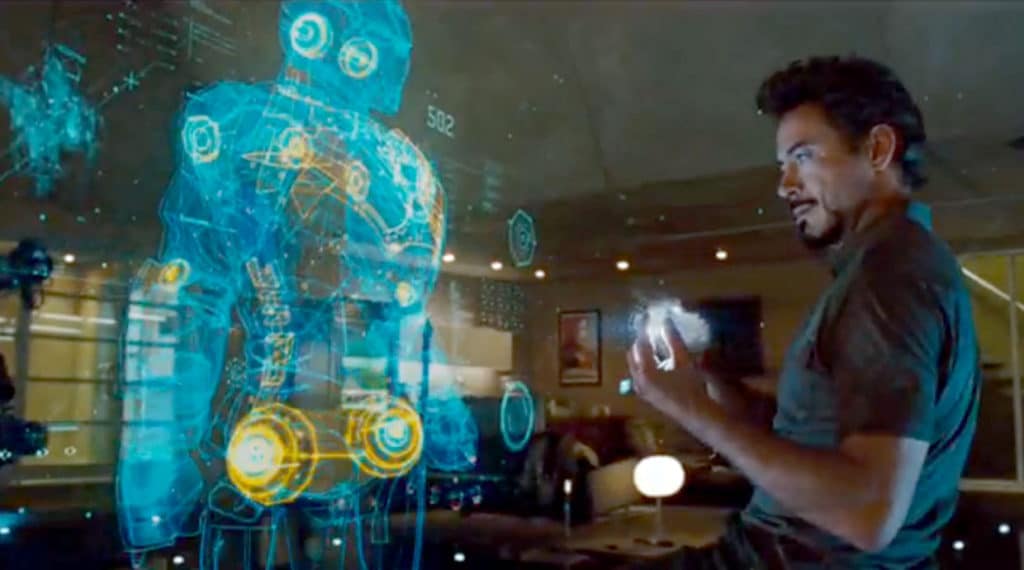
If you’re creating something– an app, a short story, a piece of music, you have to eventually put that thing out into the world. So why do we sometimes hesitate in doing this?
Where we get it wrong is in our insistence on not wanting to stumble in front of others. This is understandable, and I’ve definitely struggled with this myself. For any other INTJs out there, you already know that we value competence. Allowing ourselves to look like we don’t have it together in front of others is a challenge.
MTIs (Military Training Instructors) actually undergo this process during their training qualification. Essentially, they have to lead a flight with only the vaguest notion of how to do so, and they learn as they go, under the guidance of a trainer. The pace is fast and the environment is intense, but instructors continue to improve by doing the job day in, day out.
It’s uncomfortable, as you make a ton of mistakes, some of them very publicly. But that’s also why it’s so effective. You’re constantly trying to apply what you just learned into practice in real time. And of course there’s added motivation as no one wants to be the instructor who doesn’t know what they’re doing. One of my instructors in the MTI school called it “the leadership lab”. If something didn’t work you’d just try a different tactic with the next flight.
Tony Stark might be a fictional character, but in my experience, the most confident, competent people that I’ve observed take bigger risks, and not because they think they’ll escape unscathed. They welcome the mess ups because it’s a quick way to get where they want to be- at the next step in the learning process. Either they’ll go for it and nail it, or they’ll go for it and get irrefutable evidence of what they need to work on. It’s a win either way.
There’s a concept in business called the Minimum Viable Product and it is exactly this. Rather than investing a ton of time and effort into something only to find that it misses the mark, a company will introduce a bare bones version. This product isn’t expected to do well on its own as it isn’t polished. But, by putting the idea of it out into the marketplace a company can tell if there is enough interest to make it worth pursuing. As Tony tells J.A.R.V.I.S. in the first Ironman movie-
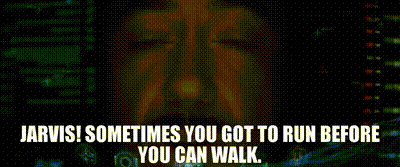
The reason Tony is so eager to find his failure point is that it’s the quickest way to improve. He’s not afraid to fail, but instead is more excited at the thought of how that failure will allow him to succeed in the overall scope of things. One might be quick to point out that Tony almost dies in this scene after his suit freezes up in high altitude. But I’d counter that if he hadn’t taken this risk and made the necessary improvements to his suit, he wouldn’t have been able to use this bit of information against the villain later on in the movie.
Drill | Deal with the Rate Determining Step
If you’re going to improve in any endeavor, you’ll get further along by focusing on improving your weaknesses, rather than simply enjoying your strengths. I’ll admit, this isn’t new information. Tony’s biggest claim to fame is that he is always iteratively improving his suits, redesigning and tweaking them to perfection. “Tony learns from his mistakes” is a meme at this point.
But there is a smart piece of lateral thinking in Ultralearning, that isn’t talked about often enough. In the section labeled Drill, Young talks about working on these inefficiencies and draws a parallel to a chemistry concept called The Rate Determining Step. This says that the slowest part of a reaction (or for our purposes, process) determines how fast the overall reaction will occur. If we’re hung up on a single aspect of our learning, it may create a bottleneck, slowing down our overall progress.
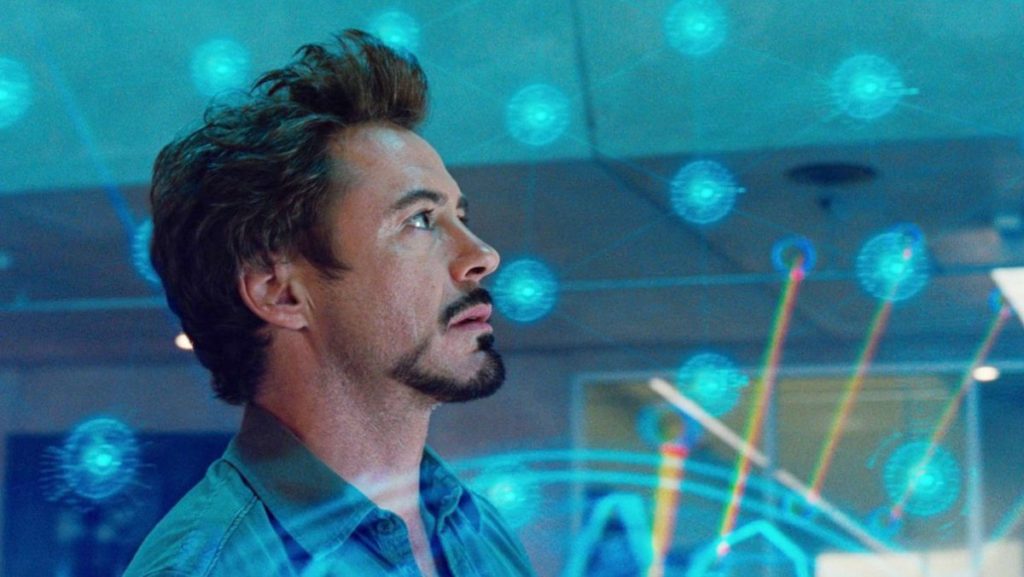
In Ironman 2, the palladium at the core of the arc reactor is slowly poisoning Tony, causing a slow and painful death. This problem with the power source not only puts a stop to any creative inventing, but nearly kills Tony. It is the rate determining step that is holding everything back, with life or death consequences. Tony eventually gains enough pieces of the puzzle to solve this specific problem. One he does, it opens up his world again, removing the bottleneck, and allowing him to defeat Whiplash, save New York with the Avengers, and create dozens of wildly creative new armors.
It’s worth pointing out that Tony couldn’t get to a solution on his own. He needed help from Nick Fury, J.A.R.V.I.S., and his dear old dad. If you find yourself stuck, don’t stubbornly insist on trying the same methods over and over. Consider hiring a coach or teacher or reach out to other experts in person or online. We often don’t have the perspective to see these bottlenecks ourselves and it can help to get an outside opinion.
Experimentation | Online Education Technology
Finally, Tony is an experimenter and early adopter of emerging technology. We can see that starting with the Silver Centurion armor, or suitcase armor, from Ironman 2, Tony almost immediately starts looking for ways to make his armor more modular and portable. So it’s only natural that years later, when nanotechnology becomes prevalent, that Tony is quick to adopt it for his own purposes, as seen in Avengers Infinity War.
There are methods today that have made education more modular and portable too (assuming you’ve got a laptop/tablet). Although I enjoy the thought of Tony building Dum-E in his undergrad lab at MIT, I also wouldn’t be surprised if Tony waved off the classroom in favor of today’s online universities. Consider experimenting with the following avenues of online education technology to augment your ultralearning project.
Online Education Today
The education landscape is vastly different than it was 20 years ago. Today, thanks to the power of the internet, you can learn from MIT professors (Tony’s alma mater!) for free, through MIT’s Open Courseware program. You can listen to university lectures on YouTube. But what if you need something more direct?
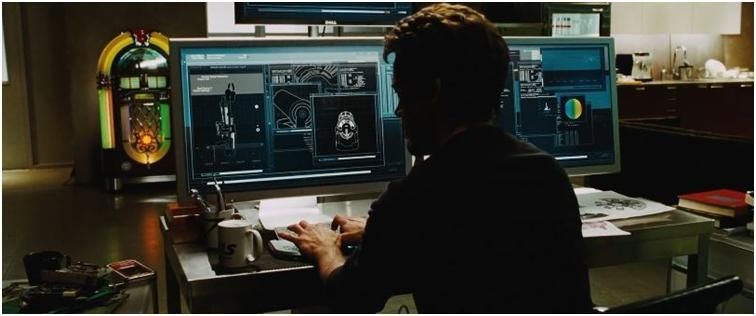
You can earn certifications in digital marketing, cybersecurity, and data analytics, etc designed by Google, through their certification program on Coursera. These courses aren’t free, as access to the program will cost you $49 a month, but that’s still a pretty good deal for a certification you can place on your resume, especially if you finish it fast.
Online University
Many traditional brick n mortar universities also offer an online university option. The University of Illinois Urbana-Champaign, with its esteemed Grainger engineering school, offers degrees and certificates online. Graduate degree programs include Bio Engineering and Aerospace Engineering. The undergrad offerings are not as substantial in STEM related fields, but this is likely because graduates have already acquired fundamental knowledge and skills that position them to better take advantage of online work.
An option such as this may work for your situation, if perhaps you live somewhere remote and don’t have the ability to move near a major university. But the real problem is that while these online options offer flexibility, they are still incredibly expensive. The graduate degrees mentioned above will still run you about $36,000. And that’s without access to in-person professors and their office hours, labs and other hands-on opportunities, not to mention lab equipment.
If I’m going to miss out on all of this, I’d expect it to be reflected in the price. $36K is no small amount of money. It should be mentioned that tuition for a non-resident attending in person for a single year can easily eclipse that $36K mark, so the online option is indeed cheaper in comparison. But that’s also just kind of the sad state of college tuition expenses in the U.S.
Western Governors University | Learn at Your Own Pace
Probably my favorite online university learning model is WGU (Western Governors University). This is a completely online school that has a unique payment model. Whereas most traditional universities charge by credit hour, WGU charges by semester. This means that you can take and finish as many classes as you want per semester. If you’re able to devote a lot of time, you could potentially finish a full-fledged degree in a year, or even 6 months. Pricing per semester varies per degree, but you’d be looking at somewhere in the neighborhood of $4,000 a semester. A degree (completed in a year) earned for $8,000 is pretty darn good.
Some ambitious individuals have taken full advantage of this model and earned several degrees from WGU. YouTuber Josh Madakor has earned degrees in Information Technology, Computer Science, and Cybersecurity, all from WGU.
WGU even has a few Tony Stark tangential degrees, offering a Bachelor’s degree in Computer Science as well as one in Software Engineering. Adjacent to science and engineering, you could go for one of WGU’s degrees in Finance. Afterall, whether or not you have Stark levels of personal wealth, it’s wise to have expertise in managing the funds you do have.
The WGU model lends itself nicely to ultralearning. It leverages the qualities of self-directed (learn at home online) and intensity (the more time/effort you invest the faster you can complete your degree). If it sounds too good to be true, know that WGU is an accredited school and has been around for decades. There is a lot of information online to learn more, so check it out if it sounds intriguing to you.
Conclusion
Why should you pursue ultralearning? You certainly don’t have to. Most people don’t. But if you’re here I’m going to assume that you are inspired at the thought of acquiring a vast array of knowledge. And there’s probably no better mental model for the ideal learner than the MCU’s Tony Stark. To review, Tony’s rules for ultralearning are-
Engineer a Gameplan
Focus
Respect the Cycle (learn by doing, seek feedback, address your weaknesses)
Experiment
By taking inspiration from Ironman and following cues from his examples of ultralearning, we can make strides towards our own ambitious learning goals and grab a little piece of that Genius, Billionaire, Playboy, Philanthropist magic for ourselves. For ideas on how to further explore the world of Polymathy yourself, look here.
And to see some real world examples of Polymaths, some very like Tony himself, click here-
What are your ultralearning goals!? What techniques appeal to you the most??

